The Belgium national team has showcased a blend of tactical ingenuity and disciplined execution under the management of Domenico Tedesco. Known for his innovative approaches and strategic understanding, Tedesco has brought a fresh perspective to the Belgian national team. This tactical analysis delves into the key elements of Tedesco’s philosophy, examining the formations, player roles, and strategies that define Belgium’s playstyle. By exploring these aspects, we aim to understand how Tedesco’s tactics have influenced Belgium’s performance on the international stage, highlighting the nuances that make his approach both unique and effective.
Build-up
Low Build-up
In the low build-up, Tedesco sets his team up in a 1-4-2-1-3 formation, with a back four, a double pivot, De Bruyne as a number-ten, and three up front.
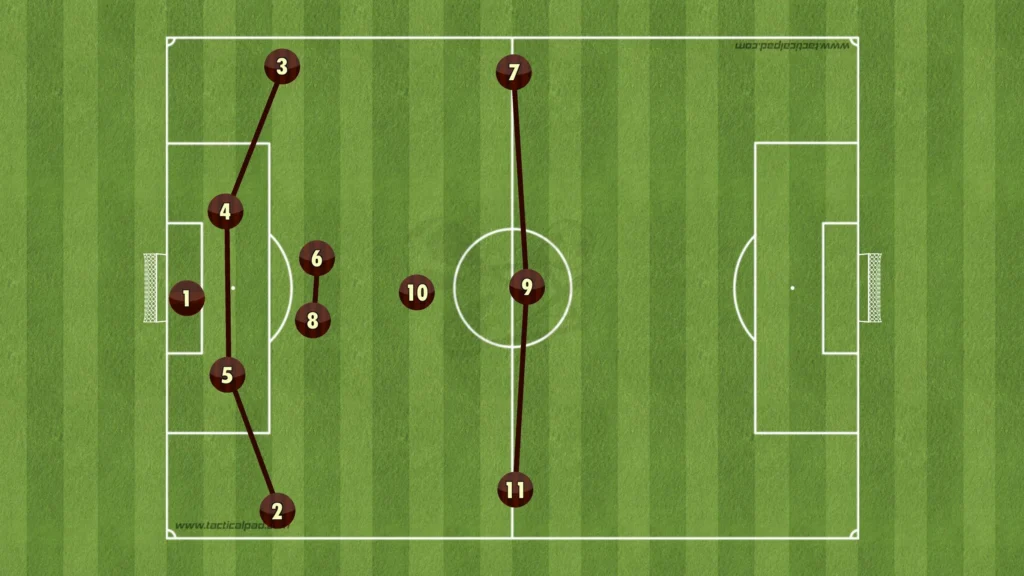

The wingers and number-ten often drop in the low build-up, trying to create numerical advantages, allowing Belgium to play through the press. If the opposition follows the dropping Belgium players, Lukaku will be left in a 1v1 against the opposition center-back, which he often will win.
High Build-up
In the high build-up, Tedesco changes the formation to a 1-3-2-2-3/1-3-2-5 formation, with a back three, two holding midfielders, two attacking midfielders, and three up front.
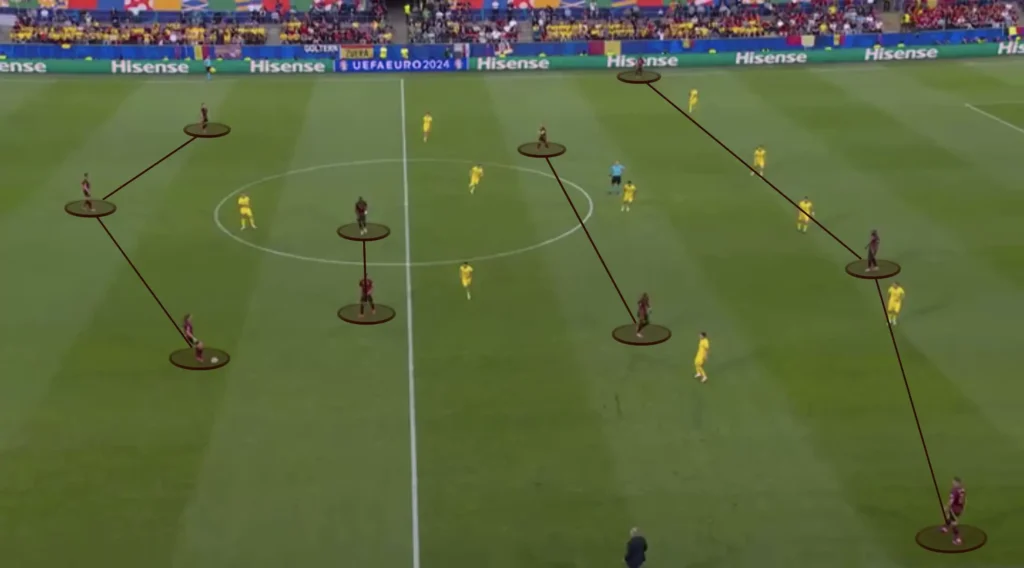
Having four central midfielders(two holding and two attacking) creates more options in the center and less space between the players. Tedesco likes this because he prioritizes playing through the middle. He needs one player high and wide to pull apart the backline while the rest create numerical advantages in the midfield areas. This builds good conditions in defensive transitions, allowing more players to press when they lose the ball. Another purpose for keeping many players in the middle is to shorten the distance between them. This shortens the length of the passes, which naturally shortens the time between passes. This means the opposition players will have less time to push up and press, giving the Belgium players more time and control.
They get into the 1-3-2-2-3 formation by pushing one of the fullbacks up as a winger, coming in with the other fullback as a center-back, and having the number-ten and an inverted winger as the two attacking midfielders.
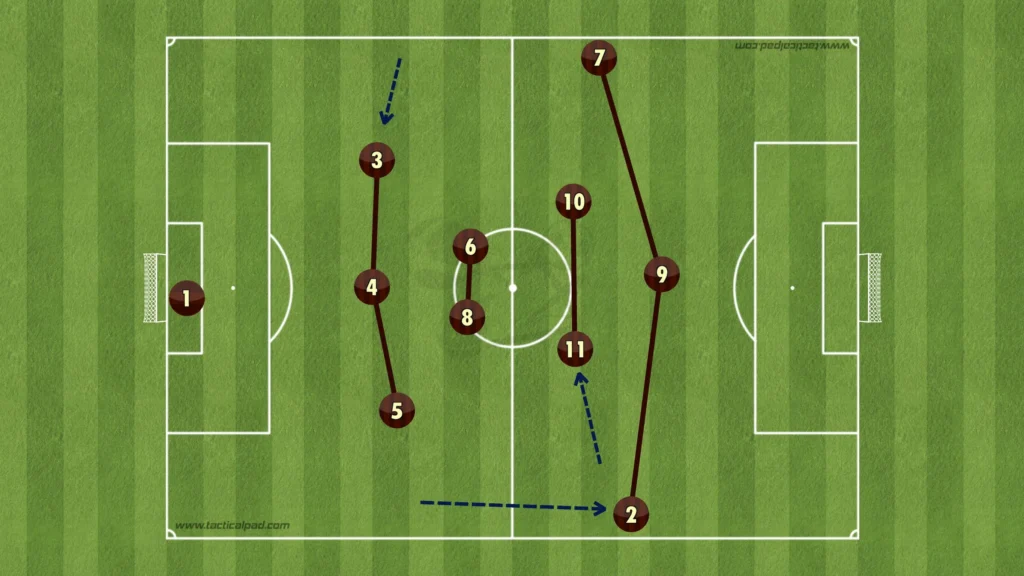
Finding the Pockets
Tedesco’s players always try to find the attacking midfielders in the pockets. They will be positioned behind the opposition’s midfield and the midfield numerical superiority usually means that at least one will be open. The striker and wingers will be pinning the opposition backline, not allowing them to push up on the attacking midfielders when they receive the ball. Belgium will mainly look for straight passes from the backline, breaking lines and finding these dangerous players who will turn and drive at the defense.
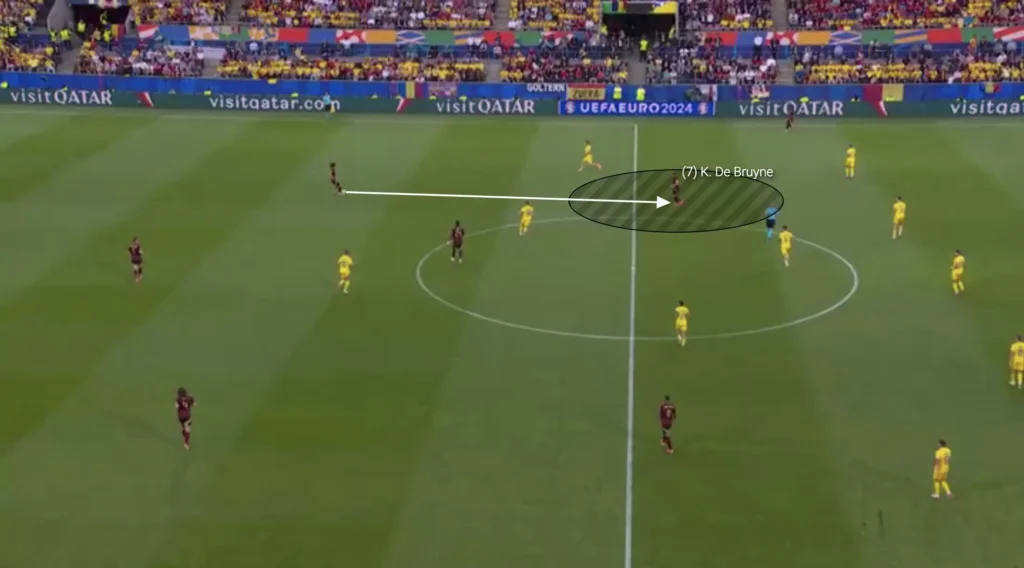
The attacking midfielders will also be found with third-man combinations involving the wingers. When a center-back gets the ball out wide, the winger will break away from his opponent to receive a pass from the center-back. With one touch, he will then play the ball inside to the free attacking midfielder in the pocket. Going around the opposition’s midfield to break the line instead of going straight through is easier when the opponents defend close together.
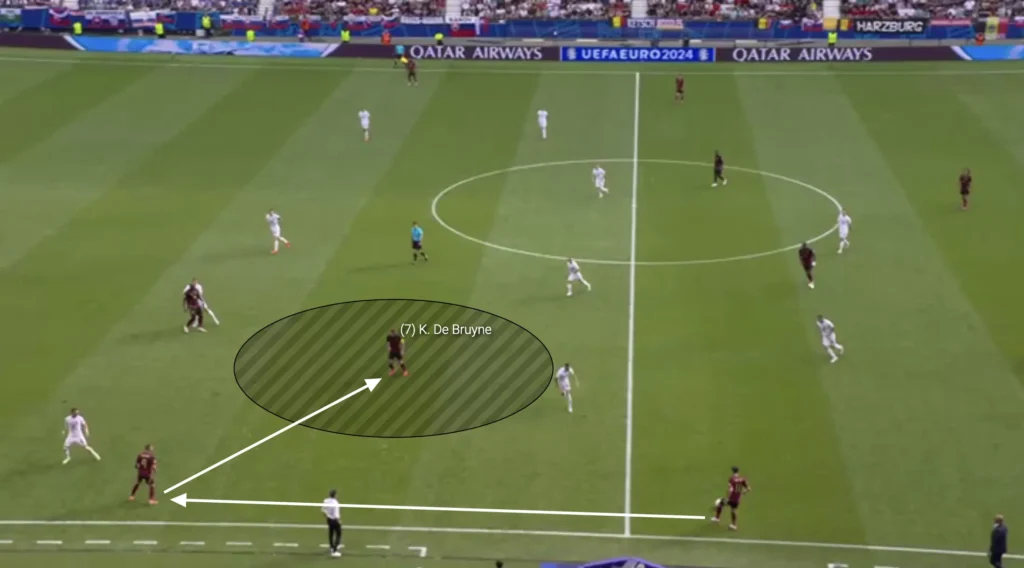
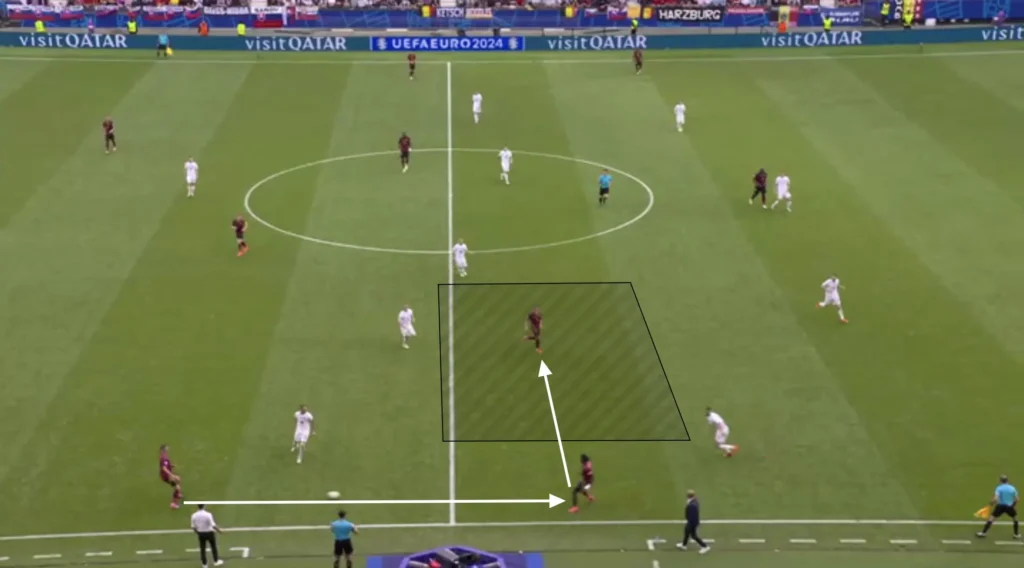
Kevin De Bruyne is at his best when he gets the ball in the pockets. His ability to find through-balls is nothing short of extraordinary. His vision and precision allow him to see and execute passes that split defenses wide open, often turning the tide of a game in an instant. De Bruyne has an uncanny knack for timing and placing his passes perfectly, threading the ball through the tightest of spaces to find his teammates in goal-scoring positions.
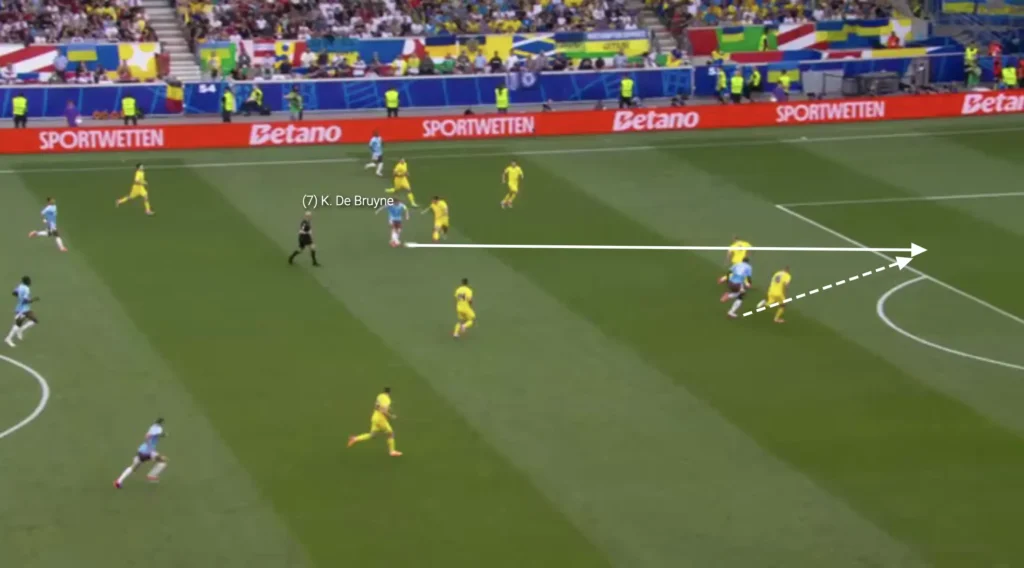
Linking with the Striker
Tedesco likes to create central overloads when attacking the opposition. Therefore, they often use the Belgium striker, Romelu Lukaku, in passing combinations. Using the striker unlocks more ways of beating the opponent’s defense. They can pass the ball to the striker, who can find an attacking midfielder in the pocket or play a one-touch pass out to the winger.
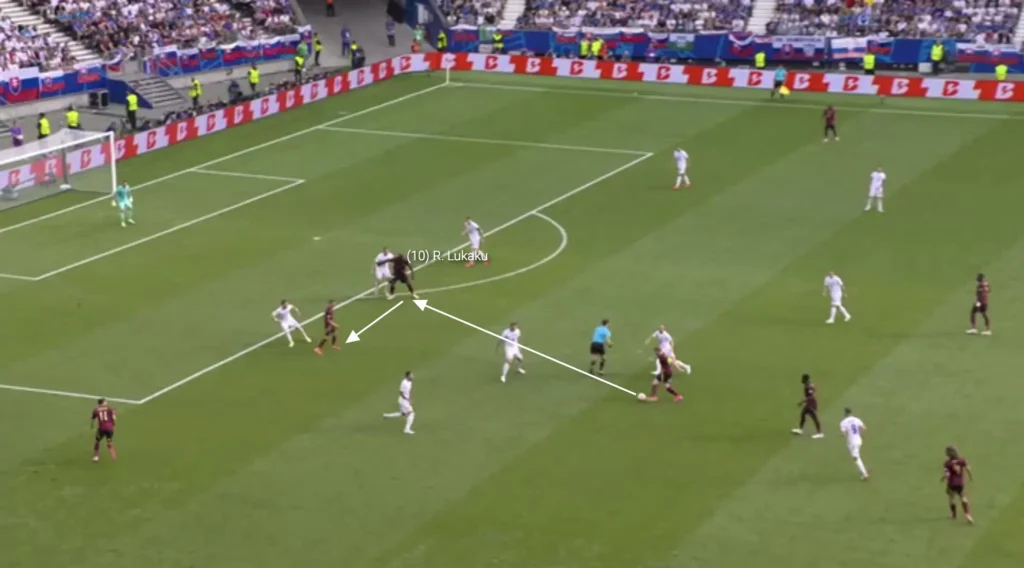
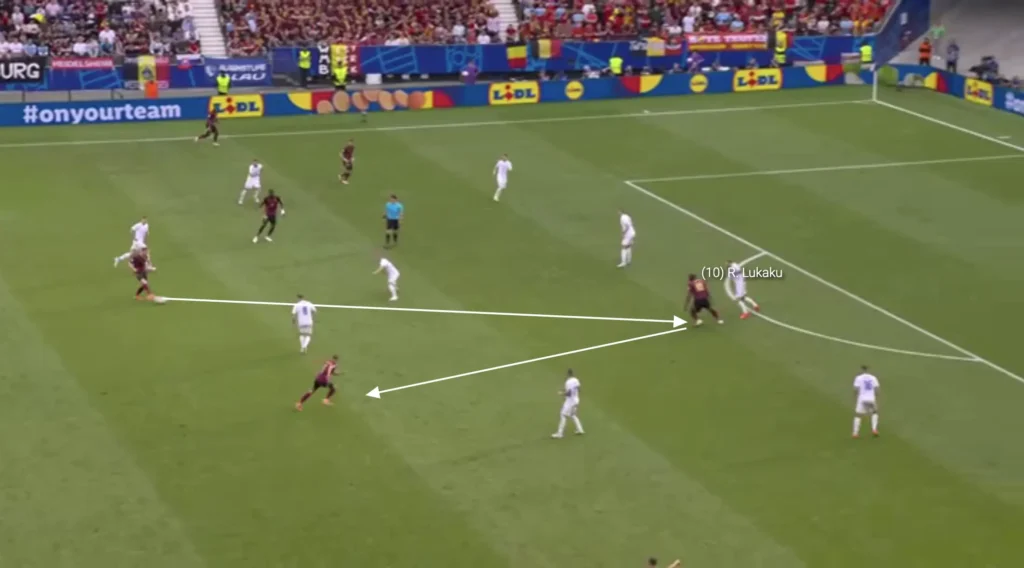
Additionally, Romelu Lukaku is extremely strong in the hold-up play. Utilizing his imposing frame and strength, Lukaku excels at receiving the ball with his back to goal, shielding it from defenders, and creating opportunities for his teammates. His precise touch and composure under pressure allow him to maintain possession, bringing midfielders and wingers into play.
Attacking the Half-Space
Tedesco’s players usually look to create chances by attacking the space between the opposition center-back and fullback. They primarily do this from the wide areas with underlaps from the attacking midfielders. When the winger receives the ball out wide he will attract the opposition fullback. This opens the space between the fullback and the center-back, which allows the Belgian attacking midfielder to make the underlapping run into this space. The ball can be played to the underlapping player, who can cross the ball into the box or attack his defender in a 1v1 situation.
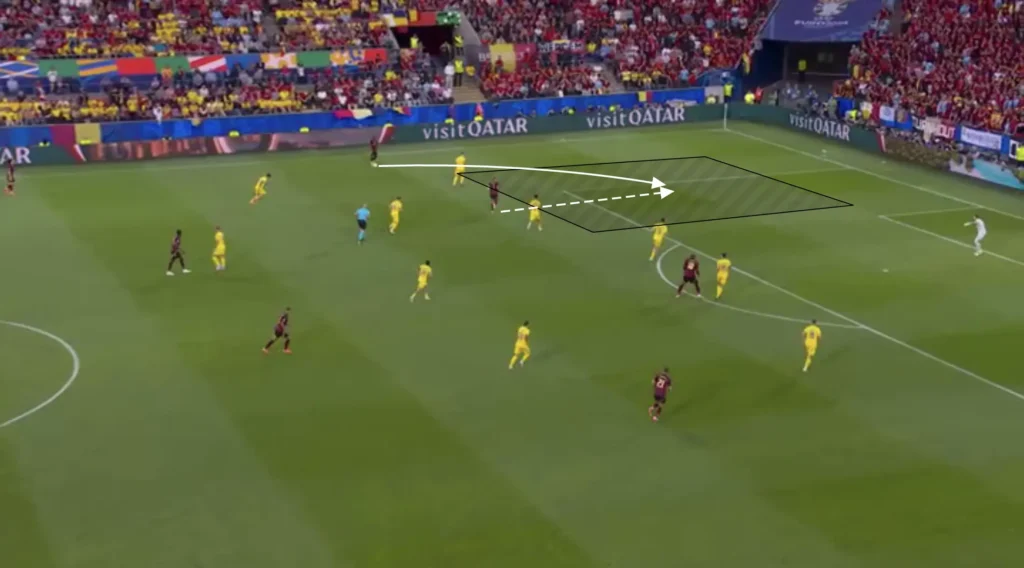
The winger does not have to play the ball to the underlapping player. The run from the attacking midfielder will often drag away an opposition defensive midfielder, which opens the space inside. The winger can take the ball inside and shoot or find a pass to a free player in front of the backline.
Overlaps
Belgium often use the overlap to produce opportunities in the final third. When the Belgian winger gets the ball in the half-space, another player quickly makes the overlap, creating a 2v1 against the opposition fullback. If the fullback drops to cover the overlapping run, the winger could cut inside, taking a shot or combining with a midfielder. If the fullback covers the center, the ball can easily be played to the overlapping player, creating a crossing opportunity.
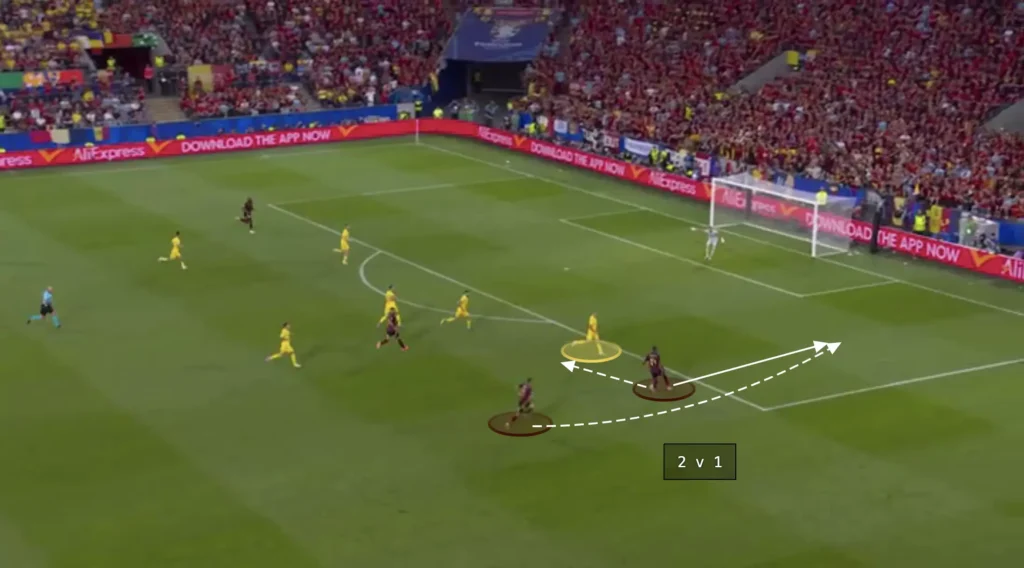
Runs in Behind
Tedesco’s players are good at converting situations where an attacking midfielder runs at the defense. The attacking midfielder will wait for a center-back to push up before he plays the ball. The center-back pushing up opens the space in behind, which allows the striker to run into the opened space. The striker will receive a pass from the midfielder, creating a 1v1 against the goalkeeper. Belgium players like De Bruyne, Trossard, and Tielemans have incredible timing in these situations, always releasing the ball at the right moment.
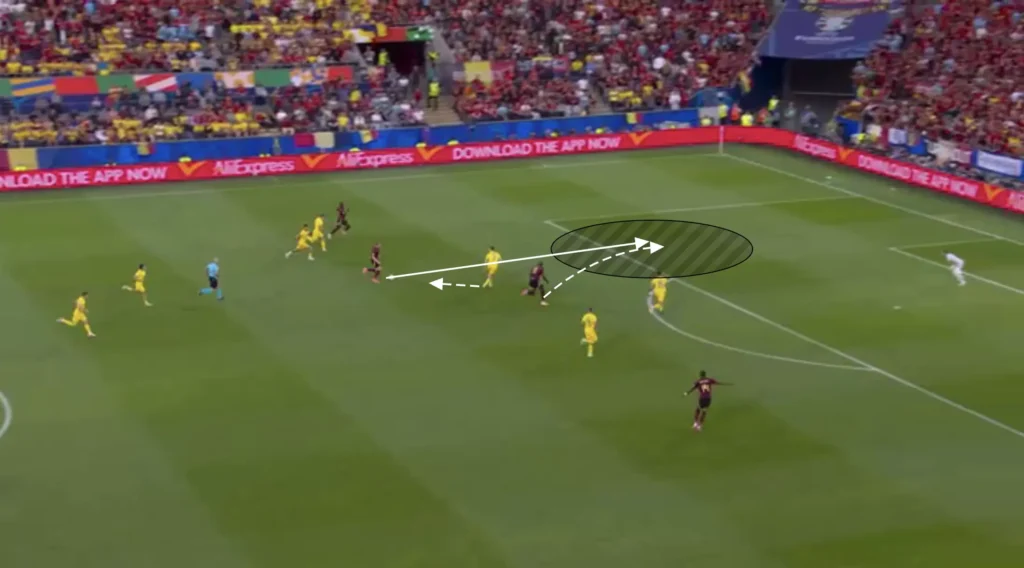
Defending
High Press
Domenico Tedesco places much value on being aggressive without the ball. This shows in Belgium’s high pressure. Tedesco usually wants his team to go man-to-man and intensely press the opposition. Each player is assigned a direct opponent to mark tightly, ensuring no easy passing options are available. This intense pressure forces the opposing team into hurried decisions, often resulting in turnovers in dangerous areas. Belgium almost use their high press as an attacking threat, scoring many goals from winning the ball high up the pitch.
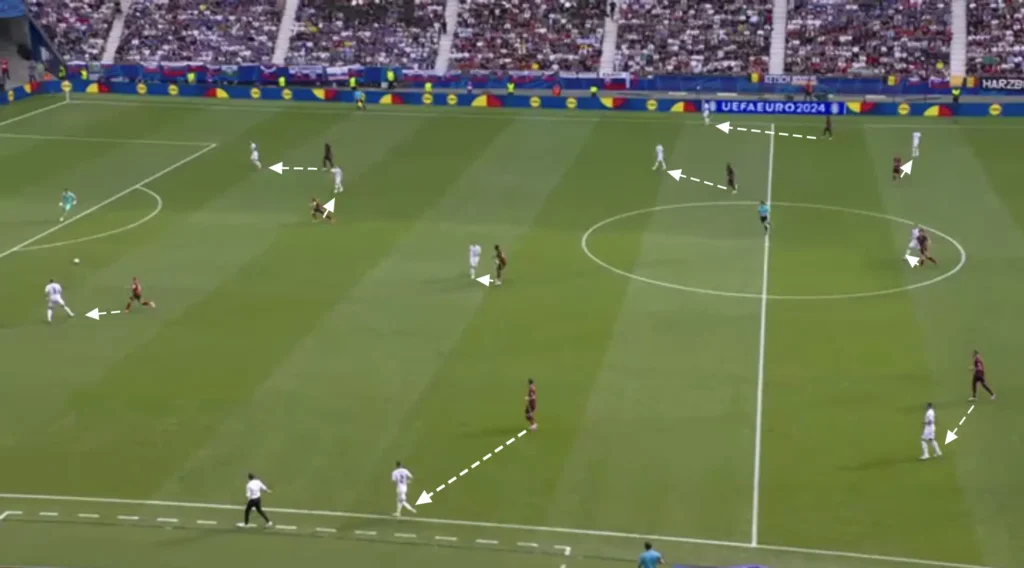
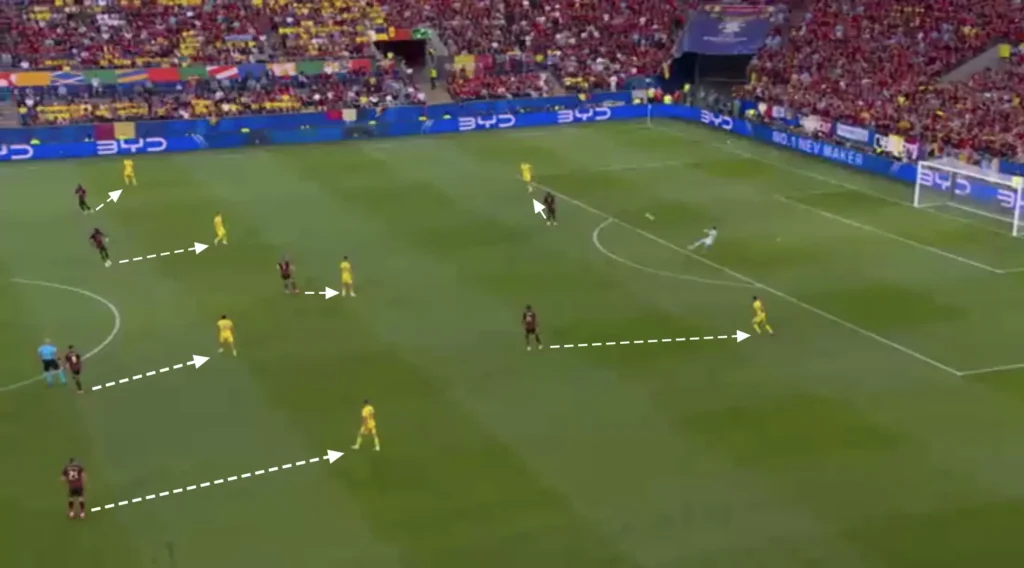
In a man-to-man system, it becomes crucial that the players know when to mark the opponent they are responsible for and when not to. If an opponent, for example, is very far from the ball, the Belgian player marking him does not need to be as close to him. He can instead come in and help create numerical superiorities in the center, decreasing the risk of dangerous 1v1 situations. The Belgium players will always have an opposition player they are responsible for, however, they will never be closer to them than they need to be.
Low Press
Tedesco’s team uses a 1-4-2-3-1 formation in the low press. They look to set up in a mid-block, always trying to close the center, forcing the opposition out wide. Tedesco wants his team to stay compact without dropping too low, preferably closing the space between the midfield and backline.
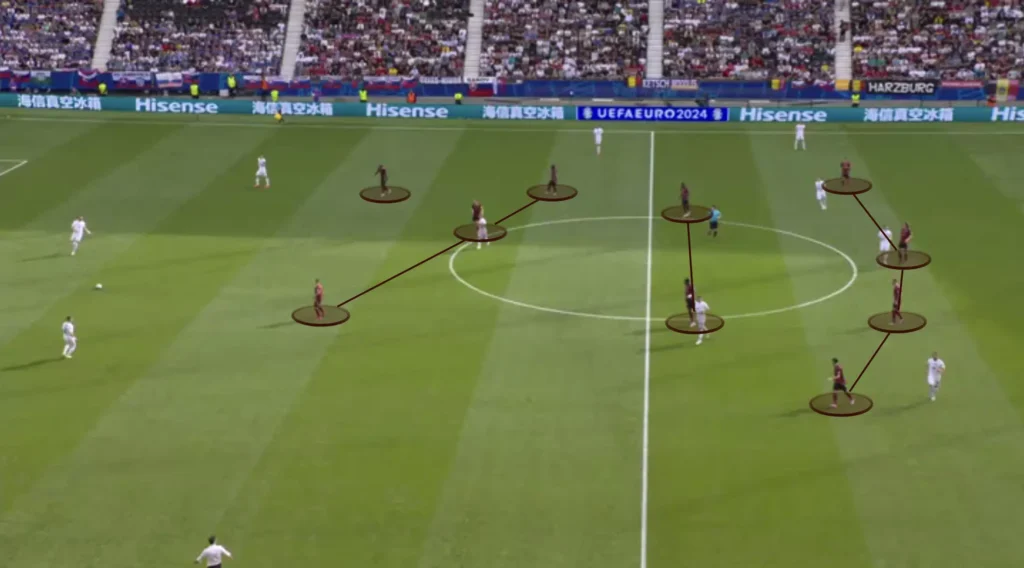
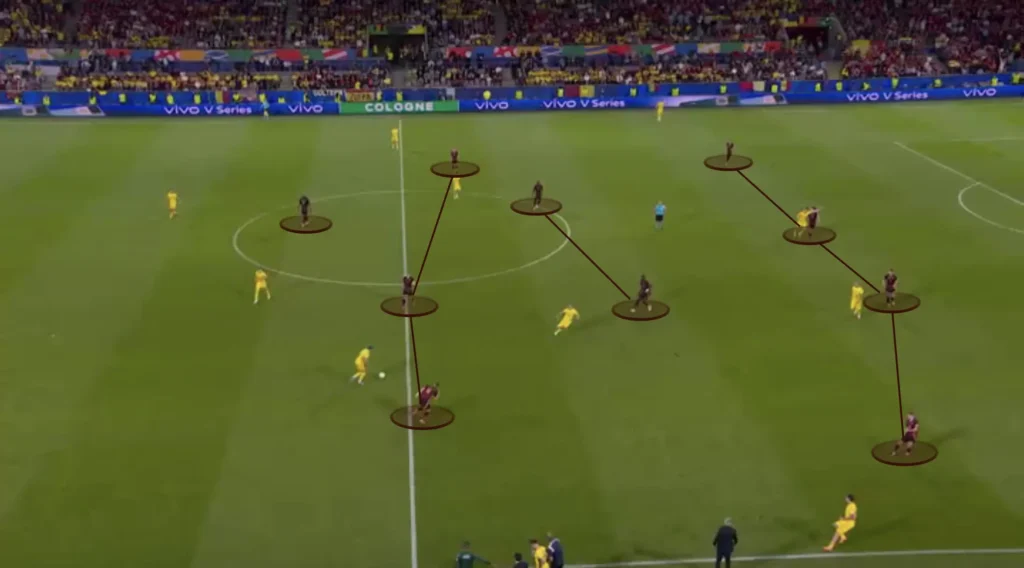
Closing the Switch of Play
The Belgian striker, Romelu Lukaku, is usually high up when defending. He is closing off one of the center-backs, making it difficult for the opposition to switch sides. When a central midfielder breaks out and decides to press one of the center-backs, the other one will be blocked off. This forces the center-back to either play the ball back to the goalkeeper or play it forward, where Belgium will come across and win the ball.
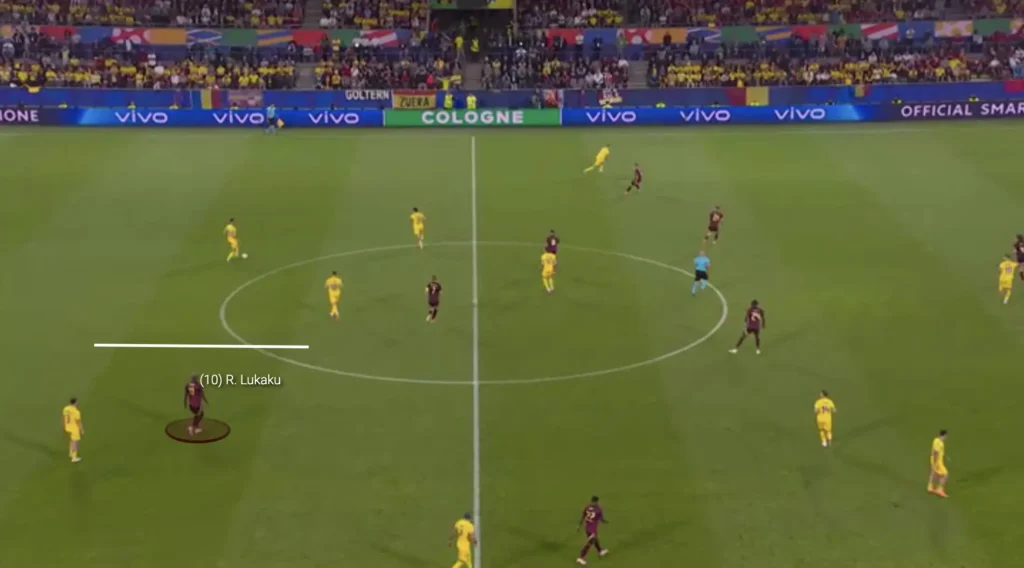
Transitions
Defensive Transitions
Positioning many players centrally, creating a numerical advantage in the midfield, creates good conditions in defensive transitions. Many players close to the ball after losing possession means that many players can work towards regaining possession. Tedesco’s players are also very aggressive in the first seconds after losing the ball. The three or four players closest will immediately jump on the opposition player with the ball and close the distance to cut off any passing lanes. Belgium, therefore, often regain possession immediately after losing it.
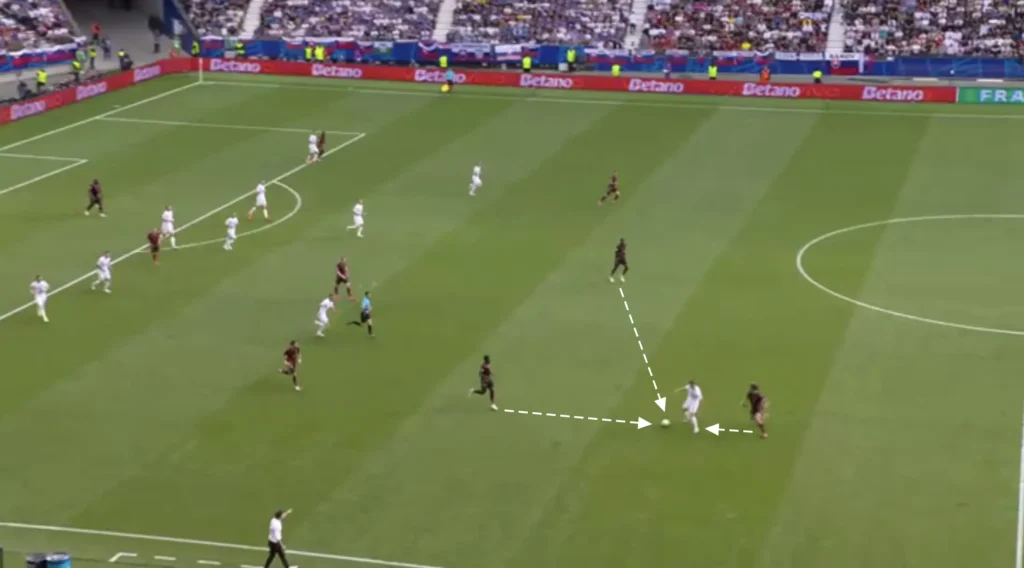
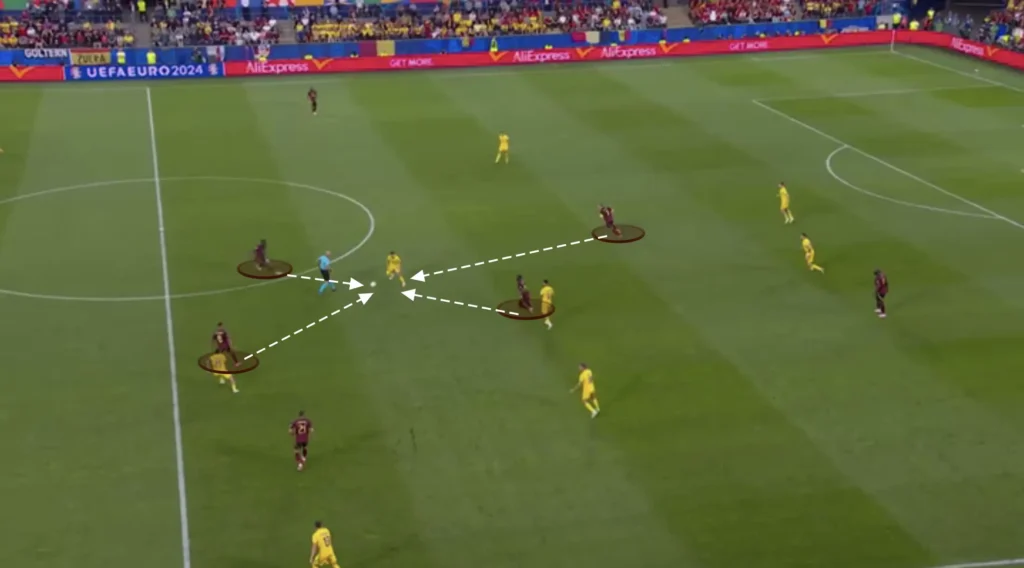
Offensive Transitions
Tedesco also wants his team to counterattack in their offensive transitions. Players like Jeremy Doku and Romelu Lukaku are at their best when they can use their speed and power to get past the defenders. Belgium, therefore, look to counterattack with a high tempo, often attacking the spaces between the center-backs and fullbacks. Keeping many players centrally while defending also enables them to incorporate more players into the counterattacks.
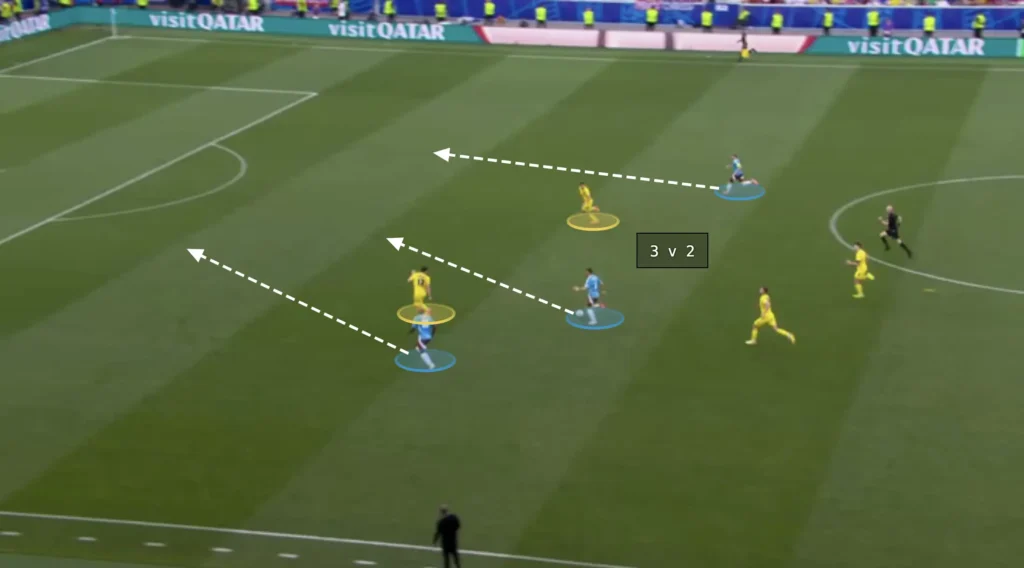
Final Thoughts
In conclusion, Domenico Tedesco’s tactical approach with Belgium showcases a blend of innovation and pragmatism. His strategies emphasize a balance between solid defense and dynamic attack, allowing Belgium to exploit their strengths while minimizing vulnerabilities. Tedesco’s ability to adapt formations and utilize players’ versatility has been pivotal in enhancing the team’s overall performance.
Through this tactical analysis, it is evident that Tedesco’s philosophy integrates disciplined organization with creative freedom, fostering a cohesive and resilient squad. As Belgium continues to evolve under his guidance, the tactical frameworks discussed here will undoubtedly play a crucial role in shaping their future successes on the international stage. For fans and analysts alike, Tedesco’s tenure promises to be an intriguing chapter in Belgian football, marked by strategic depth and tactical understanding.
